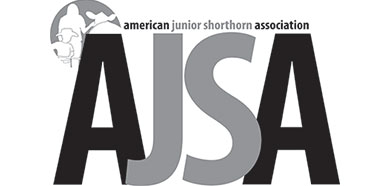By: Megan Brehm, Director of Communications and Marketing, American Shorthorn Association
I arrived a day early to the 2014 Shorthorn Junior National Show in Louisville, Kentucky and made the drive to Maysville, Kentucky. The trip proved to be a valuable experience: witnessing firsthand the tremendous value Shorthorn cattle can bring to commercial cattle herds.
After one hundred forty miles of picturesque country side driving from Louisville to Maysville through the heart of Kentucky’s thoroughbred horse and bourbon country, I found myself wrapped up in the natural beauty of the state’s winding roads, abundant trees, and large open green pastures.
Nestled in the hills of Northeastern Kentucky, Maysville is home of Clarmont Farm, a Shorthorn influenced commercial herd operated by the Clarke family for over one hundred years. After following winding roads and a few missed turns later, I arrived at Clarmont Farm, a striking farm with rolling pastures and ponds.
Approximately one hundred and twenty Shorthorn/Angus influenced cows make their home at Clarmont. The herd is based strictly on performance traits in growth, terminal carcass traits, and profitability. The herd calves in both spring and summer with approximately a quarter of calving completed in the fall months.
Clarmont Farm has been operated by the Clarke family in continuous succession for over one hundred years. The operation began in 1913 with row crops, hay, and cattle. In the early days of the farm, all cattle were purebred Shorthorn seedstock. Reese Clarke, founder of Clarmont Farm, bought and sold cattle over a large region spanning from Canada south. Since then, many changes have occurred at the farm, but one constant remains, a love for high quality cattle. Today, the farm is operated by Craig & Janet Clarke and Tyler & Kenzie Clarke. Tyler is the fourth generation family member to raise cattle at the farm. Jeff Jones, Farm Manager, is also credited with much of the farm’s success. Jones is a natural cattle enthusiast with a heart for the farm, second to none.
Beginning in the 1980’s the focus of the farm shifted from a purebred Shorthorn operation to an Angus commercial program with some Shorthorn influence. Over the years, the Clarke’s noticed that performance quality had gradually been decreasing. It was time for a change. In effort to increase performance within the herd, attention shifted back to the Shorthorn breed. The Clarke’s needed a crossbreeding tool to increase maternal and carcass traits. Shorthorns were the solution. “We simply looked at Shorthorns as the quickest way to improve our cattle herd; particularly in regards to growth and birth weights,” stated Tyler Clarke. “I spent a tremendous amount of time researching how we could build in many of the performance traits we needed to return to our herd. Shorthorns easily made their way to the top for crossbreeding potential.”
Clarmont Farm’s herd is comprised of nearly all Angus/Angus cross cows. All cows at the farm are selected for carcass and maternal traits. All bulls at Clarmont are now Shorthorn; they must meet rigid standards for quality. Any bull selected for use in their operation must be backed by heavy duty performance data. The end goal for the Clarmont operation is terminal beef; genetic decisions must be made that are reflective of that goal. Bulls are selected to be in the top 1% of Weaning Weight and Yearling Weight EPD’s for the breed, along with a solid maternal genetic background. Bulls have primarily been purchased from the Waukaru herd, Rensselear, Indiana. Bulls from Waukaru have been predictable in their genetic output, largely due to the tremendous amount of performance data collected from their herd. Bulls have been consistent and pass on real world performance attributes that improve the Clarke’s bottom line.
The results? The Shorthorn/Angus cross calves have easily outperformed their straight Angus calves from years before. The crossbred Shorthorn/Angus calves have been quite versatile, recording higher weaning weights and high meat quality. “We are extremely pleased at how well the Shorthorn cattle have adjusted to their surroundings and thrived. They have adapted well to drought and rough winters with ease, all while keeping their high quality maternal traits. Our goal is to produce high quality consumer focused beef. Shorthorns have been up to the task and have improved our end product dramatically.”
Evidence of the quality the Shorthorn breed can bring to commercial cattle herds is clearly visible through the results obtained at Clarmont Farm. The Clarke’s are able to offer a new and different perspective for purebred Shorthorn breeders as a customer of the breed. What could Shorthorn do better? What direction should breeders aim towards in the future? Tyler Clarke believes the answer lies primarily in promotion and education. “The Shorthorn breed must establish a presence within the commercial beef industry as a proven, quality, answer for crossbreeding and herd improvement. As an association, effort needs to be directed towards supporting the commercial segment of the industry who purchase Shorthorn genetics. The ShorthornPlus program has a tremendous product, but customers must be made aware of the value and performance associated with adding Shorthorn influence to their herd.” With continued interest in the Shorthorn breed, the concept will continue to expand, but efforts to grow will expedite the growth. Examples of areas Clarke believes could make a difference include establishment of a database of supply chain for Shorthorn genetics and mass marketing of Shorthorn influenced stockers.
Overall, the Clarke’s are extremely satisfied with the impact Shorthorn cattle have made on their herd. As commercial breeders, the added value to their calves has been dramatic. Since reincorporating Shorthorns back into their genetic lineup, the Clarke’s haven’t’ looked back. As I made the return trip to Louisville, my thoughts shifted from the scenery around me to the road the Shorthorn breed is travelling. Shorthorn and ShorthornPlus composite cattle have a bright future in store. “The future is bright for the Shorthorn breed, we couldn’t be more enthusiastic to utilize all Shorthorn has to offer,” stated Clarke.


![[ Random Image ]](/wp-content/themes/ajsa/headers/header9.jpg)


